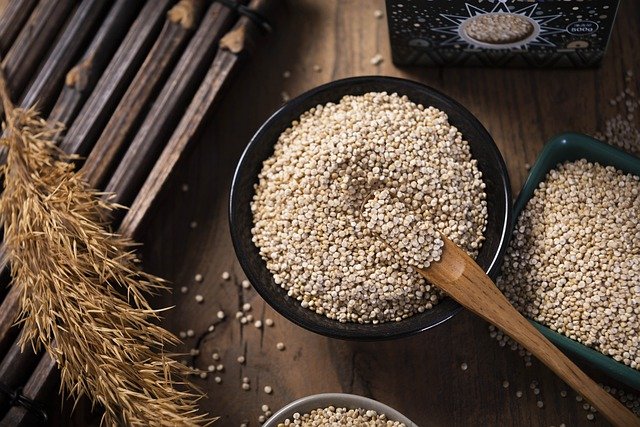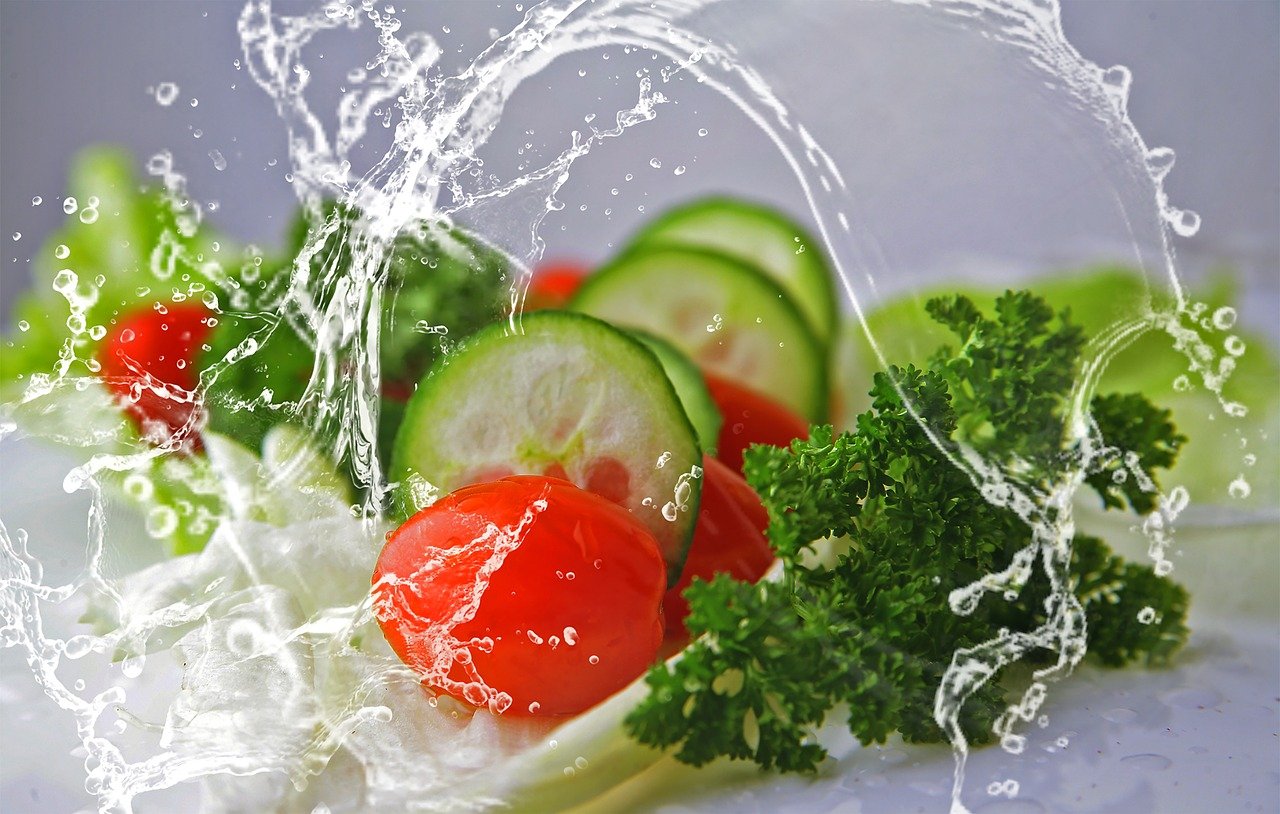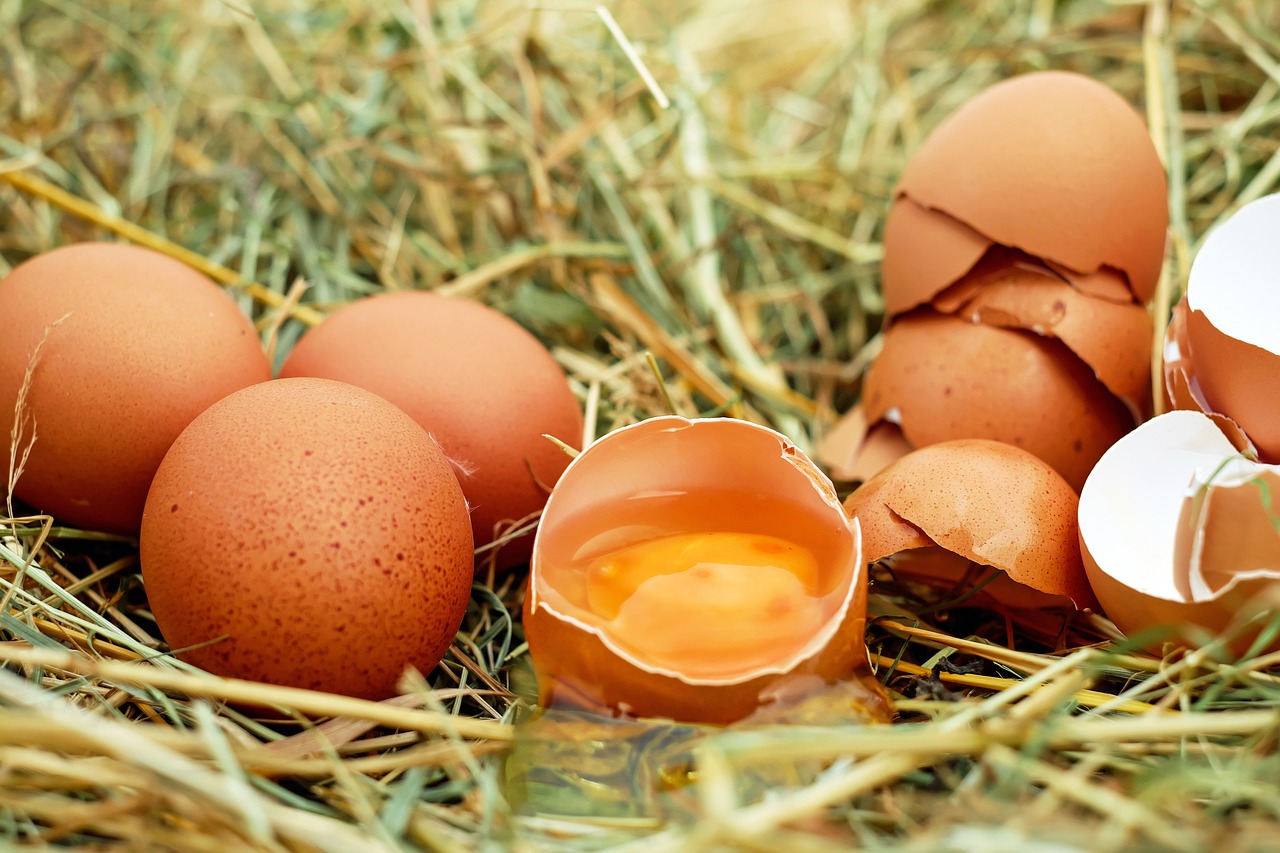The pescatarian diet can be best described as almost vegetarian, but without giving up the heart healthy fats and proteins that one could get from seafood. The word pescatarian comes from the Italian word “pesce” meaning fish, combined with the word vegetarian.
People often go for a pescatarian diet for health reasons. In general, seafoods are a more nutritious source of complete protein as compared to dairy, poultry, and red meat, as they contain very little saturated fats, all while being high in omega-3 and having lower calories.
The pescatarian diet is comparable to the Mediterranean diet, which is considered as one of the healthiest diets in the world for their lower rates of heart disease and longer lifespans.[1]
Some may also decide to go pescatarian for environmental reasons, as large-scale animal production is known to be one of the worst polluters in agriculture. Others may also choose to go pescatarian for ethical reasons.

Regardless of the reason, following a pescatarian diet is worth trying as it is less restrictive and easier to obtain complete proteins as compared to completely vegetarian or vegan diets. In fact, some people may follow a pescatarian diet as a stepping stone into a full-fledged vegetarian diet (or vice versa).
The Health Benefits of the Pescatarian Diet
Compared to the standard omnivorous diet, a pescatarian diet is significantly healthier as it encourages the consumption of fresh and nutrient-dense plant-based food while keeping an equally nutritious source of complete proteins: seafood.
Here are some of the known benefits of switching to a pescatarian diet:
- Better Heart Health
In a standard western diet, there is a high consumption of saturated fats and refined sugars that usually lead to higher cholesterol and blood sugar levels. The rise in processed food, which are defined by refined carbohydrates and unhealthy fats, is often seen as one of the main culprits behind the rising numbers of cardiovascular disease related deaths around the world.[2]
Even without processed food, a higher consumption of red meats such as pork and beef is associated with a higher risk of developing cardiovascular diseases and mortality.[3] This is because red meat tend to contain more saturated fat, which is known to raise the heart-clogging LDL (“bad”) cholesterol levels in your bloodstream.
Although enjoying a piece of steak occasionally won’t harm you, most experts agree that allocating more seafood into your diet is the healthier way to satisfy your protein requirements.
Not only does seafood contain less saturated fats, but they’re also the best natural sources of omega-3 fatty acids which are best known for their benefits to the heart. In fact, primarily fish eating populations such as the Inuit and the Japanese have been observed to have lower rates of cardiovascular disease.[4]
Omega-3 is known to tackle several risk factors of heart disease. This includes lowering triglycerides, blood pressure levels, raising good (HDL) cholesterol, preventing blood clots, reducing plaque, and toning down inflammation.[5]
Another heart-healthy characteristic of the pescatarian diet is the high consumption of fiber, which comes from the fruits, vegetables, whole grains, nuts, and seeds that make up its other half. Fiber is also known to effectively reduce bad cholesterol and blood pressure levels.[6]
- Better Mental Health
A higher consumption of omega-3 fatty acids is associated with better mental health, with less incidences of depression, anxiety, and other mood disorders.
Both EPA and DHA, which are omega-3 fatty acids found in oily fish, are considered essential to proper brain function. Did you know that our brain is made up of 60% fat?
These omega-3 fatty acids are abundant in the membranes of brain cells, whose primary functions are to preserve function and facilitate communication between brain cells.[6]
Several studies have found that omega-3 supplements (fish oil) are capable of preventing and alleviating symptoms of depression and anxiety. For instance, one review found that a lower consumption of omega-3 sources is often associated with a higher chance of developing depression.[7]
Therefore, it is crucial for us to consume sufficient sources of omega-3 to support mental health, especially those that come from oily fish. In Western diets, red meat is the preferred source of protein, and the lack of fish consumption is believed to play a role in the rising rates of depression around the world.[7]
In a study published in Public Health Nutrition, a higher consumption of fish yielded a higher self-reported mental health status among New Zealand residents, even after adjusting for other factors that may influence their mental wellbeing.[8]
Additionally, a higher intake of fresh fruits and vegetables (and less of the “empty calorie” processed food) is generally associated with better mental wellbeing, happiness, and satisfaction in life. One study even recommended the consumption of at least 5 servings of fruit and vegetables a day for the improvement of mental health.[9]
- Protection Against Certain Cancers
The other half of a pescatarian diet involves eating a lot of highly nutritious and fresh fruits and vegetables, which are the primary source of the invaluable phytochemicals. These phytochemicals have significant antioxidant and anti-inflammatory activities which have been observed to prevent and combat cancer cell growth throughout multiple studies.[10]
For example, cruciferous vegetables like broccoli, kale, cauliflower, and bok choy contain sulforaphane, a phytochemical that was found to have reduced the size of cancer cells by up to 75%.[11]
Berries are high in anthocyanins, which are pigments that also have potent antioxidant activities that was observed to fight cancer cells as well. In a study published in 2010, bilberry extract was observed to have reduced the growth of cancer cells by 7% among patients with colorectal cancer.[12]
A diet high in fresh fruits and vegetables is widely observed to decrease the risk of developing all types of cancers.[13]
Omega-3 rich diets, which are mostly composed of seafood, were also observed to result in a decreased risk of developing certain types of cancers, such as colorectal, prostate, and breast cancer.[5]
- Protection Against Cognitive Decline and Alzheimer’s
As mentioned earlier, omega-3 fatty acids play a major part in the structure and function of brain cells.
This also means that it also plays a crucial role in cognitive functioning, which includes learning, memory, attention, decision making, linguistic abilities, and the like.
Multiple studies have shown that a higher intake of omega-3 fatty acids can slow down age-related mental decline and reduce the risk of Alzheimer’s disease.[5]
Some studies have also found that fish oil supplements can help improve the brain function of those who are suffering from non-age related mild cognitive impairment.[14]
The antioxidant compounds that are abundant in fruits and vegetables are also known to combat age-related cognitive decline by reducing the possible damage caused by oxidative stress on our brain cells.[15]
Populations that are under the Mediterranean diet, which is highly similar to a pescatarian diet, were also observed to have a lower risk of developing dementia, Alzheimer’s, and had a slower rate of age-related cognitive decline. This was attributed to their high consumption of antioxidants, omega-3 fatty acids, and homocysteine-related vitamins (vitamin B12 and folate), which are all abundant in the pescatarian diet as well.[16]
- Can Help Prevent and Manage Type 3 Diabetes
If you want to avoid having diabetes, or if you’re currently diagnosed with it, then going for a pescatarian diet is guaranteed to help you sustain balanced blood sugar levels.
In a study published in BMI Open Diabetes Research & Care, plant-based diets are effective in promoting well-being in the management of type 2 diabetes. This is because plant-based foods are rich in antioxidants, fiber, micronutrients, and unsaturated fatty acids, which all are all protective factors against type 2 diabetes.[17]
From the same study, it was also found that the consumption of processed food, unhealthy fats, and red meat is highly influential to the development of type 2 diabetes. Thus, making fresh fish as your main protein source will help you cut out the risks that come with the excessive consumption of red meat.
Additionally, the anti-inflammatory activities of omega-3 fatty acids in fatty fish can prevent autoimmune diseases such as type 1 diabetes.[18]
- Can Help You Lose Weight
The pescatarian diet is characterized by the consumption of nutrient dense and high-fiber plant-based foods, coupled with a high quality source of complete proteins. These two factors make the pescatarian diet ideal for maintaining a good weight, as both fiber and protein help maintain longer periods of satiety.
Compare this to eating fast food, which are high in calories but low in nutrients – just to feel full, you’ll have to eat more calories than your body actually needs. These “empty calories” are the culprit for the increasing levels of obesity these days, as these processed foods are unfortunately very popular for their affordability and addictiveness.[19]
- Supports Gut Health
Although often overlooked, the gut microbiome is one of the most important systems in our body. Not only is our gut health important to digestion, but it also influences our immune system, heart, brain, and metabolism.
Thus, it is crucial to maintain a well-balanced gut microbiome, which is approached in two ways: first, by fostering the good bacteria in your system, all while discouraging the overgrowth of the bad bacteria.
Dietary fibers and short chain fatty acids (such as the omega-3 fatty acid, ALA) are the prime energy sources for the microbes in your gut microbiome – all of which can be obtained from plant-based food. It is especially important to “feed” the good bacteria, as they prevent bad bacteria from taking over which can cause infections and chronic inflammation.[20]
On the other hand, the bad bacteria in your body thrives on a poor diet that is high on added sugars and processed food. The excess consumption of added sugars is known to trigger inflammation in your gut, which can lead to even more serious chronic diseases.
The Downsides of the Pescatarian Diet
Although the pescatarian diet is considered generally safe with a smaller risk of nutrition deficiencies, it does have its own set of downsides that you might want to consider.[21]
The Risk of Mercury Poisoning
The most serious risk that a pescatarian diet could pose is mercury poisoning, which is unfortunately present in most seafoods. Bodies of water tend to accumulate mercury due to pollution, of which the surrounding organisms absorb over time.
Mercury poisoning is a very serious matter – it’s a neurotoxin that can damage your health for life. Some symptoms of advanced mercury poisoning include muscle weakness, nerve loss in the hands and face, impaired motor skills, and hearing and speech difficulties. Although mercury has no side effects when consumed in negligible amounts, it tends to bioaccumulate in our bodies and symptoms may manifest through chronic exposure.
Thus, it is important for a pescatarian to be well-informed of the varying levels of mercury levels among seafood, as well as the origins of the seafood they’re buying.
Some species of fish may contain more mercury than others. The general rule is that the higher a fish is in the food chain, the higher levels of mercury have accumulated inside the fish. Here is a list of fish grouped by least to most in terms of mercury content to give you an idea of which you should eat or avoid.
- Least Mercury – safest for regular consumption: salmon, mackerel, sardines, shrimp, anchovies, freshwater trout, squid, clams, crayfish, catfish, canned light tuna, and pollock
- Highest Mercury levels – avoid, or consume only occasionally: king mackerel, marlin, swordfish, bigeye tuna, halibut, albacore, shark, and orange roughy
Even farmed fish, which most claim are mercury-free, can be exposed to other waterborne pollutants including mercury. Thus, it is really crucial for you to learn about the origins of the fish you’re eating, especially if you’re going to rely on them for such a huge portion of your diet!
It Can Be Costly
Although this depends on where you live, seafood are generally more expensive than other sources of protein, such as red meat and poultry.
When it comes to the pescatarian diet, you don’t necessarily have to aim for expensive seafood such as crab, lobster, salmon, or tuna, which may often show up in pescatarian recipes.
You can always go for cheaper types of fish, such as mackerel, sardines, or anchovies, which can be just as nutritious and filling as the fish mentioned above. These types of fish also have lower mercury levels. You should also aim for fish that are more common in your region, as those tend to be cheaper (make sure to check their mercury levels!).
Additionally, you can include more plant-based protein sources in your diet whenever you need to scrimp on fish, such as quinoa, soy, and beans.
You Can Still Be Unhealthy
Just like with other diets, following a pescatarian diet doesn’t guarantee good health. You’ll need to make the extra effort to make sure that your meals are actually providing you with complete nutrients without going past your recommended calorie intake – it’s not as simple as eating fried salmon for lunch and getting a bowl of pre-packaged Caesar salad for dinner.
Apart from the fish and greens, the methods of preparation, the ingredients, the portions, and the freshness are major factors that determine the healthiness of your food.
For instance, it is much healthier to eat baked salmon over a salmon sushi roll, since there is a higher tendency to overeat carbohydrates because you can’t control the portions of rice. A freshly prepared salad with a simple vinaigrette dressing is also much healthier than Caesar salad, since the dressing of the latter is high in unhealthy fats and calories.
The healthiest way to eat, no matter the type of diet, is always to prepare the food yourself at home. Cooking at home ensures that you’re eating the freshest ingredients, getting enough macro and micronutrients, and eating just the right amount of portions.
What A Pescatarian Diet Looks Like
The pescatarian diet is relatively easy to follow. It is like a vegetarian diet, but with the addition of seafood as a protein source.
What pescatarians eat: Whole grains, legumes, nuts, seeds, fruits, vegetables, fish, and shellfish. Some pescatarians may also choose to eat eggs and dairy as an additional (and ethical) protein source.
What pescatarians don’t eat: Chicken, pork, beef, turkey, game, and lamb.
Conclusion
The pescatarian diet is an exceptionally healthy diet, relative to the standard Western diet. The high consumption of omega-3 fatty acids, fibers, and phytochemicals from nutrient-dense food is sure to provide benefits to a wide range of organ systems. This is especially true for heart health, as cutting out processed food and red meat lowers the consumption of unhealthy and heart-clogging fats.
However, there are some risks to the pescatarian diet, such as the likelihood of mercury poisoning. To avoid this, one must be well-informed of the varying levels of mercury among seafood, as well as the origins of the seafood they’re buying. Nonetheless, the pescatarian diet is generally safe and you will have a low risk of encountering nutrient deficiencies. Plus, you can choose to eat dairy and eggs as another source of complete proteins.
References
[1] Harvard Health Publishing. (2015) Mediterranean diet linked to longevity, say Harvard researchers. Retrieved on January 5, 2020 from https://www.health.harvard.edu/staying-healthy/mediterranean-diet-linked-to-longevity-say-harvard-researchers
[2] Anand, S. S., Hawkes, C., de Souza, R. J., Mente, A., Dehghan, M., Nugent, R., Zulyniak, M. A., Weis, T., Bernstein, A. M., Krauss, R. M., Kromhout, D., Jenkins, D., Malik, V., Martinez-Gonzalez, M. A., Mozaffarian, D., Yusuf, S., Willett, W. C., & Popkin, B. M. (2015). Food Consumption and its Impact on Cardiovascular Disease: Importance of Solutions Focused on the Globalized Food System: A Report From the Workshop Convened by the World Heart Federation. Journal of the American College of Cardiology, 66(14), 1590–1614. https://doi.org/10.1016/j.jacc.2015.07.050
[3] ScienceDaily. (2020, February 3) Eating red meat and processed meat hikes heart disease and death risk, study finds. Retrieved on January 4, 2020 from https://www.sciencedaily.com/releases/2020/02/200203114328.htm
[4] Hosomi, R., Yoshida, M., & Fukunaga, K. (2012). Seafood consumption and components for health. Global journal of health science, 4(3), 72–86. https://doi.org/10.5539/gjhs.v4n3p72
[5] Hjalmarsdottir, F. (2018, October 15) 17 Science-Based Benefits of Omega-3 Fatty Acids. Retrieved on January 4, 2020 from https://www.healthline.com/nutrition/17-health-benefits-of-omega-3
[6] Dyall S. C. (2015). Long-chain omega-3 fatty acids and the brain: a review of the independent and shared effects of EPA, DPA and DHA. Frontiers in aging neuroscience, 7, 52. https://doi.org/10.3389/fnagi.2015.00052
[7] Grosso, G., Galvano, F., Marventano, S., Malaguarnera, M., Bucolo, C., Drago, F., & Caraci, F. (2014). Omega-3 fatty acids and depression: scientific evidence and biological mechanisms. Oxidative medicine and cellular longevity, 2014, 313570. https://doi.org/10.1155/2014/313570
[8] Silvers, K. M., & Scott, K. M. (2002). Fish consumption and self-reported physical and mental health status. Public health nutrition, 5(3), 427–431. https://doi.org/10.1079/phn2001308
[9] Głąbska, D., Guzek, D., Groele, B., & Gutkowska, K. (2020). Fruit and Vegetable Intake and Mental Health in Adults: A Systematic Review. Nutrients, 12(1), 115. https://doi.org/10.3390/nu12010115
[10] Ashraf M. A. (2020). Phytochemicals as Potential Anticancer Drugs: Time to Ponder Nature’s Bounty. BioMed research international, 2020, 8602879. https://doi.org/10.1155/2020/8602879
[11] Li, Y., Zhang, T., Korkaya, H., Liu, S., Lee, H. F., Newman, B., Yu, Y., Clouthier, S. G., Schwartz, S. J., Wicha, M. S., & Sun, D. (2010). Sulforaphane, a dietary component of broccoli/broccoli sprouts, inhibits breast cancer stem cells. Clinical cancer research : an official journal of the American Association for Cancer Research, 16(9), 2580–2590. https://doi.org/10.1158/1078-0432.CCR-09-2937
[12] Thomasset, S., Berry, D. P., Cai, H., West, K., Marczylo, T. H., Marsden, D., Brown, K., Dennison, A., Garcea, G., Miller, A., Hemingway, D., Steward, W. P., & Gescher, A. J. (2009). Pilot study of oral anthocyanins for colorectal cancer chemoprevention. Cancer prevention research (Philadelphia, Pa.), 2(7), 625–633. https://doi.org/10.1158/1940-6207.CAPR-08-0201
[13] Key, T. J., Schatzkin, A., Willett, W. C., Allen, N. E., Spencer, E. A., & Travis, R. C. (2004). Diet, nutrition and the prevention of cancer. Public health nutrition, 7(1a), 187-200. DOI: 10.1079/PHN2003588
[14] Mazereeuw, G., Lanctôt, K. L., Chau, S. A., Swardfager, W., & Herrmann, N. (2012). Effects of ω-3 fatty acids on cognitive performance: a meta-analysis. Neurobiology of aging, 33(7), 1482.e17–1482.e1.482E29. https://doi.org/10.1016/j.neurobiolaging.2011.12.014
[15] Crichton, G. E., Bryan, J., & Murphy, K. J. (2013). Dietary antioxidants, cognitive function and dementia–a systematic review. Plant foods for human nutrition (Dordrecht, Netherlands), 68(3), 279–292. https://doi.org/10.1007/s11130-013-0370-0
[16] Féart, C., Samieri, C., & Barberger-Gateau, P. (2010). Mediterranean diet and cognitive function in older adults. Current opinion in clinical nutrition and metabolic care, 13(1), 14–18. https://doi.org/10.1097/MCO.0b013e3283331fe4
[17] Toumpanakis, A., Turnbull, T., & Alba-Barba, I. (2018). Effectiveness of plant-based diets in promoting well-being in the management of type 2 diabetes: a systematic review. BMJ Open Diabetes Research and Care, 6(1). http://dx.doi.org/10.1136/bmjdrc-2018-000534
[18] Stene, L. C., Joner, G., & Norwegian Childhood Diabetes Study Group (2003). Use of cod liver oil during the first year of life is associated with lower risk of childhood-onset type 1 diabetes: a large, population-based, case-control study. The American journal of clinical nutrition, 78(6), 1128–1134. https://doi.org/10.1093/ajcn/78.6.1128
[19] Rupp, R. (2014, December 24) Why Empty Calories Are a Big Problem. Retrieved on January 5, 2020 from https://www.nationalgeographic.com/culture/food/the-plate/2014/12/24/why-empty-calories-are-a-big-problem/
[20] Robertson, R. (2017, June 27) Why the Gut Microbiome Is Crucial for Your Health. Retrieved on January 5, 2020 from https://www.healthline.com/nutrition/gut-microbiome-and-health[21] Maloney, L. (2019, April 16) 4 Disadvantages of a Pescatarian Diet. Retrieved on January 6, 2020 from https://www.livestrong.com/article/399500-the-disadvantages-of-a-pescetarian-diet/










